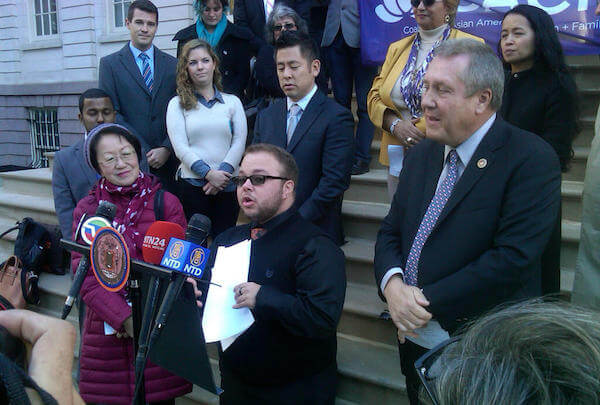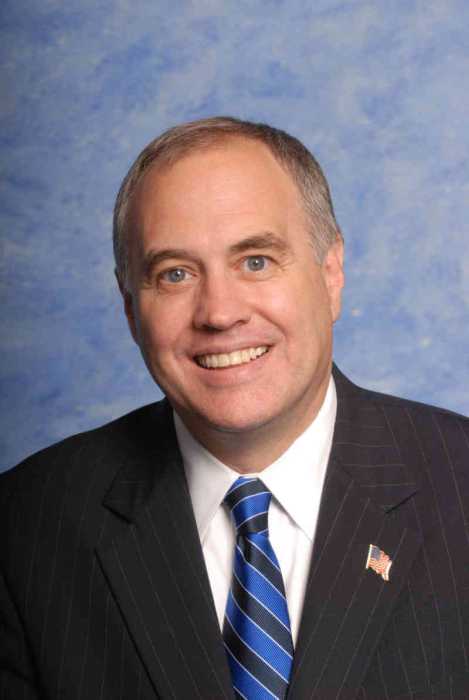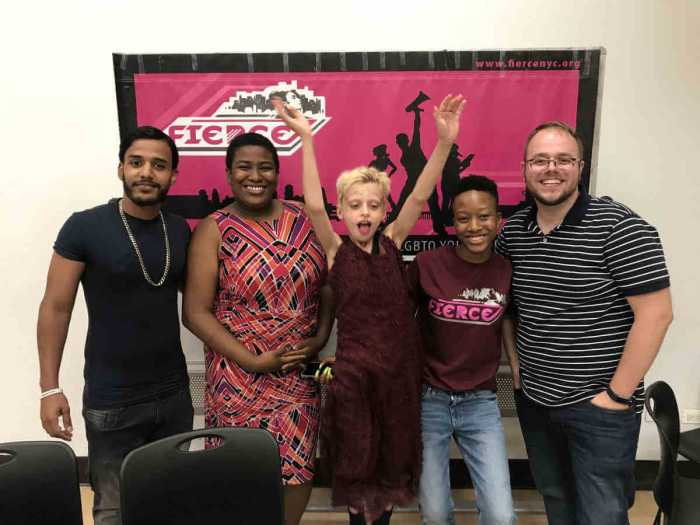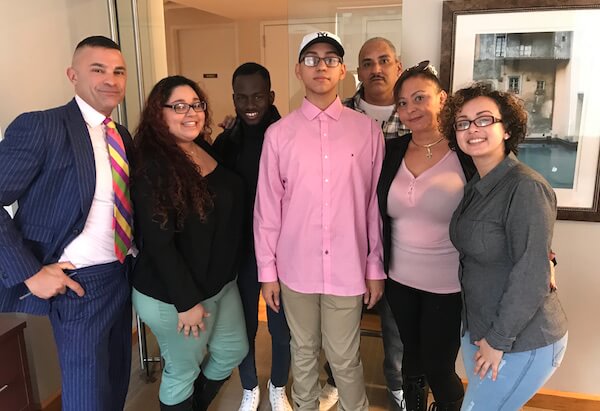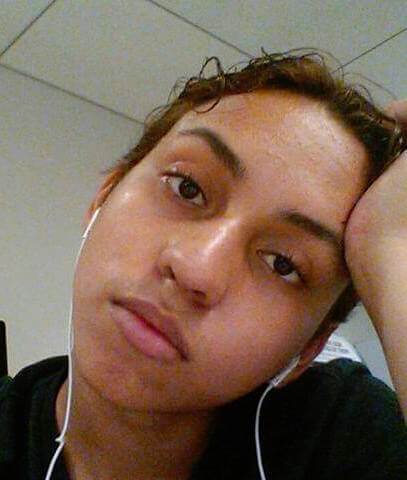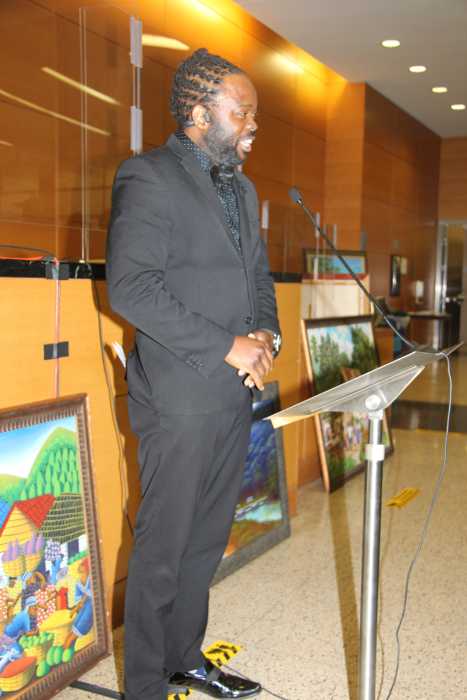Transgender activist Bryan John Ellicott of Staten Island is flanked by Councilmembers Margaret Chin and Daniel Dromm in celebrating the enactment of three Data Equity measures, including one requiring surveying clients of city services on sexual orientation and gender identity. | GAY CITY NEWS
BY ANDY HUMM | Under three new laws, New York City is now obligating its agencies and contractors to collect much more specific data on those who use their services, including whether they are LGBT.
“Now we count,” said out gay City Councilmember Daniel Dromm of Queens, author of Intro 552-A that requires a range of agencies — including the Department of Education — to survey clients and students age 14 and over anonymously and voluntarily on their sexual orientation and gender identity.
“We pay our fair share of taxes, we deserve our fair share of services,” said Dromm. “It is also about providing culturally sensitive services.”
Data Equity Act also requires surveying for ethnic subgroups to better identify specific community needs
Dromm, who represents Jackson Heights, the most diverse district in the city, also sponsored Intro 251-A that requires collection of data on the top 30 ethnicities and languages in the city.
Councilmember Margaret Chin of Lower Manhattan took that a step further as prime sponsor of Intro 551-A, requiring service providers to allow people to indicate if they have a “multiracial ancestry or ethnic origin” as opposed to fitting themselves into one box. The Council also passed Chin’s Resolution 472 calling on the state and federal governments to “accommodate multiracial identification.”
Just prior to Mayor Bill de Blasio signing the bills, Dromm and Chin were joined at a City Hall press conference by a veritable rainbow coalition of LGBT and ethnic services providers from PFLAG and the Asexual Visibility and Education Network to the Indo-Caribbean Alliance and the Coalition for Asian American Children and Families. And all the groups were down with LGBT inclusion.
Steven Choi, executive director of the New York Immigration Coalition, said, “With more detailed data, including demographic information regarding ethnic origin with separate categories for 22 Asian-Pacific groups, as well as options to indicate multiracial ancestry and one’s sexual orientation and gender identity, our city can understand how better to support New York’s diverse communities.”
“Residents who are not counted are essentially made invisible,” said Lena Alhusseini, executive director of the Arab American Family Support Center, “and their needs kept silent.” She said that “Arabic is currently the fourth most widely spoken language among English language learners” in our schools, but that Arab Americans are “erased from the US Census, classified as ‘White’ and at times ‘Black’ or ‘Asian.’” Given the discrimination they face these days, “now is the time to recognize these communities in all data collection,” she said.
Transgender activist Bryan John Ellicott said, “Some of our Staten Island elected officials like to say there aren’t a lot of LGBT people in their districts. Now we’ll be able to say, ‘Yes you do, and here’s where they live.’”
The LGBT measure requires surveys to include “questions regarding sexual orientation, including homosexual, lesbian, gay, bisexual, or asexual status (and an option to write in a response) and gender identity, including transgender, cisgender, intersex status, or other” — again with an option to write in something else.
The new laws require this data collection by the Departments of Social Services, Homeless Services, Health and Mental Hygiene, Aging, Youth and Community Development, and Education and the Administration for Children’s Services, “and any other agencies designated by the mayor that directly or by contract collect demographic information.” They also require mandatory training for those collecting the data and a manual on “how to invite persons served by such agencies to complete the surveys.” The data will not be connected to the individual. In 18 months, the data has to be made public on the web.
“It’s about recognizing how people define themselves,” said Drew Tagliabue, executive director of PFLAG NYC.
“It’s just a beginning,” said Dromm, but clearly a breakthrough in the cause of capturing the true and complex diversity of New Yorkers.

